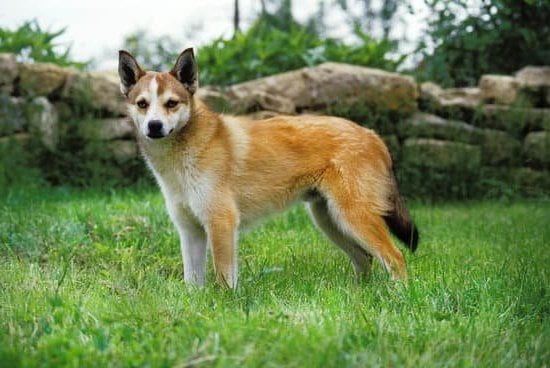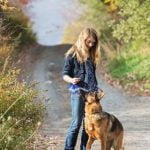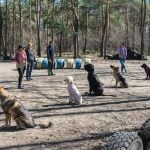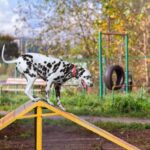Are you wondering how to train your dog not to chew stuff up? Chewing is a natural behavior for dogs, but it can become problematic when they start destroying furniture, shoes, and other valuable items in your home. In this article, we will explore the reasons why dogs chew on objects and provide you with effective strategies for training your furry friend to channel their chewing instincts in a more appropriate way.
Understanding the underlying reasons behind why dogs chew is crucial in addressing this behavior. Whether it’s teething, anxiety, boredom, or simply exploring their environment, there are various motivations that drive dogs to chew. By delving into these natural instincts, pet owners can gain insights into how to manage and redirect their dog’s chewing behavior effectively.
In the following sections, we will discuss practical tips for managing the teething stage in puppies and provide guidance on identifying the best chew toys for your dog. Additionally, we will delve into the use of positive reinforcement, supervision, and confinement as training tools to discourage inappropriate chewing.
Furthermore, we will offer step-by-step instructions on teaching your dog essential commands such as “leave it” and “drop it.” Finally, we will emphasize the importance of consistency and patience in the training process while also providing guidance on seeking professional help if needed.
Puppy Teething
Puppies begin teething around the age of 3-6 months, which is when they start to lose their baby teeth and adult teeth begin to come in. During this stage, puppies may chew more frequently as a way to relieve discomfort and help loosen baby teeth. It’s important for pet owners to understand this natural process and take steps to manage it effectively.
To help manage the teething stage and redirect chewing behavior, it’s essential to provide appropriate chew toys for your puppy. Look for toys specifically designed for teething puppies, such as rubber toys or nylon bones that are durable and safe for chewing. Avoid giving your puppy items that resemble household objects, such as old socks or shoes, as this can lead to confusion about what is acceptable to chew on.
In addition to providing suitable chew toys, it’s also helpful to use positive reinforcement when redirecting chewing behavior. When your puppy chews on an appropriate toy instead of an unauthorized object, be sure to praise and reward them with treats or verbal praise. This will help reinforce the idea that chewing on the right items is desirable behavior. Remember, patience and consistency are key when training a puppy not to chew on inappropriate objects.
| Puppy Teething Tips | Benefits |
|---|---|
| Provide appropriate chew toys | Durable and safe options |
| Use positive reinforcement | Helps reinforce desirable behavior |
| Patience and consistency | Key elements in training process |
Providing Appropriate Chew Toys
Choosing the Right Chew Toys
When it comes to providing chew toys for your dog, it’s essential to choose the right ones that are safe, durable, and suitable for your dog’s size and chewing habits. Look for toys made of sturdy materials such as rubber or nylon that can withstand heavy chewing. Avoid toys with small parts that could be easily chewed off and swallowed by your dog, as this could pose a choking hazard.
Benefits of Using Chew Toys for Training
Using chew toys as part of your training approach offers several benefits. Firstly, it helps satisfy your dog’s natural urge to chew, reducing the likelihood of them seeking out inappropriate items to gnaw on. Additionally, chew toys can help alleviate boredom, anxiety, and stress in dogs, promoting overall mental and emotional well-being. By associating positive experiences with their chew toys, dogs are more likely to learn appropriate chewing behaviors and distinguish between their toys and household items.
Interactive and Treat-Dispensing Chew Toys
Incorporating interactive or treat-dispensing chew toys into your dog’s routine can also be advantageous. These types of toys provide mental stimulation and encourage problem-solving skills while offering a tasty reward when the dog engages with the toy. This not only keeps them occupied but also reinforces positive behavior through the association of playtime with treats. Consider experimenting with different types of interactive chew toys to find what best captures your dog’s interest and keeps them engaged.
Positive Reinforcement
Understanding the Role of Positive Reinforcement
Positive reinforcement involves rewarding your dog for exhibiting desirable behavior, such as chewing on appropriate toys instead of household items. When used consistently, positive reinforcement can be a powerful tool in teaching your dog what is acceptable to chew and what is not. This method focuses on reinforcing good behavior rather than punishing undesirable behavior, creating a more positive and effective training experience for your dog.
Choosing the Right Rewards
When using positive reinforcement to discourage chewing on inappropriate items, it’s important to choose the right rewards for your dog. This could include small treats, praise, or extra playtime with their favorite toy. The key is to find something that your dog finds highly rewarding and motivating. By consistently rewarding them when they choose to chew on appropriate items, you are reinforcing this behavior and encouraging them to continue making the right choices.
Consistency and Timing
Consistency is key when using positive reinforcement for training purposes. Make sure to reward your dog immediately after they exhibit the desired behavior, so they can make a clear connection between their actions and the reward. Additionally, be consistent in your approach and ensure that all family members or caregivers are also on board with using positive reinforcement techniques. This will help avoid confusion for your dog and reinforce the training process.
By understanding the role of positive reinforcement, choosing the right rewards, and being consistent in your approach, you can effectively use this method to train your dog not to chew on inappropriate items. Remember that patience is essential during the training process, as it may take time for your dog to fully understand what is expected of them. However, with dedication and consistency, positive reinforcement can be a valuable tool in addressing chewing behaviors in dogs.
Supervision and Confinement
One of the most effective strategies for preventing your dog from chewing on inappropriate items is to closely supervise their behavior and use confinement when necessary. When you are unable to watch your dog, it’s important to confine them in a safe and secure area, such as a crate or gated-off room. This not only prevents chewing incidents but also provides a controlled environment for training.
When supervising your dog, always keep an eye on their behavior and be ready to redirect any chewing attempts. If you notice your dog showing interest in an inappropriate item, immediately intervene by offering them a more suitable chew toy and praising them for choosing the correct object. By consistently supervising and redirecting their behavior, you can help them understand what is acceptable to chew on and what is not.
In addition to supervision, using confinement as a training tool can be highly effective in preventing destructive chewing behaviors. When you are unable to directly supervise your dog, confining them in a designated area ensures they cannot engage in inappropriate chewing. Over time, as your dog learns which items are off-limits and becomes more reliable in their chewing habits, you can gradually increase their freedom within the home.
Training Exercises
Teaching your dog the commands “leave it” and “drop it” can be incredibly beneficial in training them not to chew on inappropriate items. These commands are essential for redirecting your dog’s attention away from objects they shouldn’t be chewing on and encouraging them to release any items they have already picked up.
To start teaching your dog the “leave it” command, you will need a treat and their leash. Begin by showing the treat to your dog and giving the command “leave it.” When your dog focuses on the treat, gently pull on their leash to guide them away from the treat.
As soon as they divert their attention, praise them and give them a different, more appropriate toy or treat. Repeat this process several times until your dog consistently responds to the command.
Similarly, teaching your dog the “drop it” command involves using a treat or toy that they enjoy. Begin by enticing your dog to pick up an object or toy, then say “drop it” while holding a treat in front of their nose. As soon as they release the item, reward them with the treat and praise. With regular practice, your dog will learn to associate the command with relinquishing whatever is in their mouth.
Training exercises like these require patience and consistency. It’s important to practice these commands regularly so that your dog becomes proficient at responding to them in various situations. By teaching them these commands, you’ll have better control over what your dog chews on and can redirect their behavior effectively.
Consistency and Patience
Training your dog not to chew on inappropriate items requires consistency and patience. It is important to understand that changing a habit takes time and effort, but with dedication, you can help your dog overcome their chewing behavior.
Here are some key points to remember when emphasizing the importance of consistency and patience in the training process:
- Be consistent with redirection: When you see your dog chewing on something they shouldn’t, calmly redirect their attention to an appropriate chew toy. Over time, they will learn what is acceptable to chew on.
- Establish a routine: Dogs thrive on routines, so set a consistent schedule for playtime, walks, feeding, and training sessions. This will help create a sense of predictability for your dog.
- Stay patient and positive: Training takes time, so be patient with your dog as they learn. Use positive reinforcement such as praise or treats when they choose to chew on their toys instead of household items.
Consistency and patience are essential in reinforcing good behavior and breaking bad habits. Remember, every dog is different, so it’s important to stay committed to the training process and remain patient as your furry friend learns.
Seeking Professional Help
In some cases, despite all efforts and dedication to training your dog not to chew on inappropriate items, the behavior may persist. When this happens, it is important to consider seeking the assistance of a professional dog trainer. A professional trainer has the expertise and experience to assess your dog’s behavior and develop a customized training plan to address the chewing issue effectively.
If you find that your dog’s chewing behaviors are causing extensive damage to your belongings or pose a risk to their health, seeking professional help should be seriously considered. A professional dog trainer can provide valuable insights into understanding the root cause of your dog’s chewing behavior and offer effective solutions tailored to your specific situation.
When choosing a professional trainer, it is important to look for someone who has a strong background in positive reinforcement training methods and specializes in behavior modification. Additionally, seek out recommendations from trusted sources such as veterinarians, friends, or family members who have had success with a particular trainer.
With the guidance of a professional, you can work towards addressing your dog’s chewing behaviors in a safe and supportive environment. Remember that seeking professional help is not a sign of failure but rather a proactive step towards finding a solution that benefits both you and your beloved pet.
Frequently Asked Questions
How Do I Train My Dog Not to Chew Things Up?
To train your dog not to chew things up, it’s important to provide them with appropriate chew toys and teach them what is acceptable to chew on. Additionally, you can use positive reinforcement by rewarding your dog when they chew on the right items and redirecting their behavior when they start to chew on something they shouldn’t.
How Do You Discipline a Dog After Chewing Up Something?
When disciplining a dog after chewing up something, it’s crucial to address the behavior immediately after the incident occurs. It’s essential to avoid using physical punishment, as this can lead to fear or aggression in your dog.
Instead, use a firm voice and body language to communicate disapproval, and then redirect the dog’s attention to an appropriate chew toy.
How Do I Stop My Dog From Destroying My Stuff?
To stop your dog from destroying your stuff, make sure they have plenty of mental and physical stimulation through exercise and interactive play. Additionally, consider crate training or using baby gates to limit access to areas where your dog may be tempted to destroy things when unsupervised.
Consistency in training and providing alternative outlets for chewing can also help prevent destructive behavior.

Welcome to the blog! I am a professional dog trainer and have been working with dogs for many years. In this blog, I will be discussing various topics related to dog training, including tips, tricks, and advice. I hope you find this information helpful and informative. Thanks for reading!





